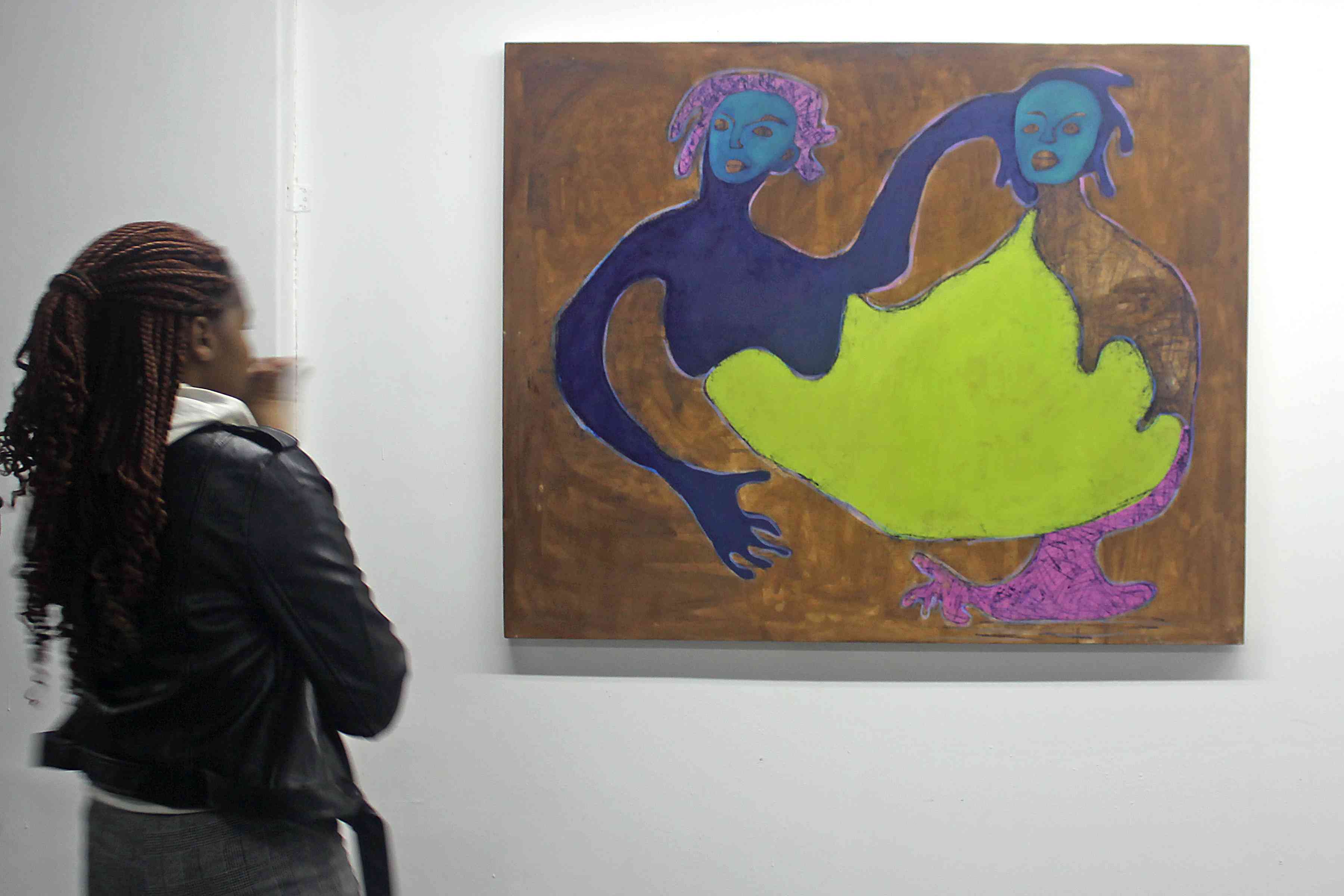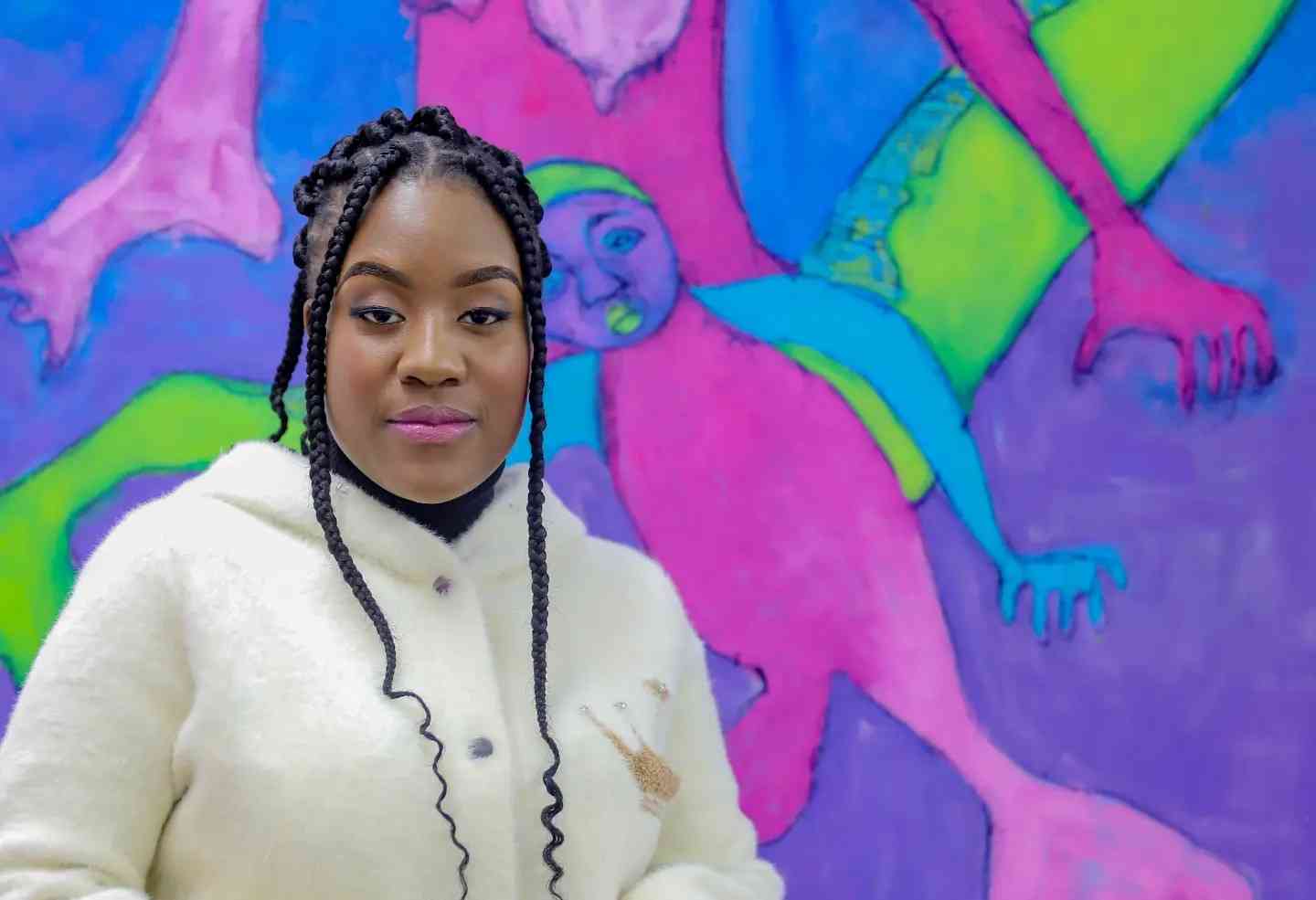
GRACE NYAHANGARE’S Hatikanganwe Asi Tinopora exhibition at First Floor Gallery is inspired by personal trauma.
Without succumbing to grief and self-pity, Nyahangare freely confesses that not everything has been well in her life.
Her paintings are tragic and comical reflections of unhappy circumstances.
In the age of social media, many young black women present themselves and share exclusively positive aspects of their lives.
This gives a false impression that life is easy and everything is okay to their peers. Contrary to the habit of many, Nyahangare dismisses the fallacy by revealing the difficult time she went through as a young black woman.

The artist describes her work as a dialogue of brokenness and discomfort.
“I am narrating my journey into motherhood, responsibilities and how I became vulnerable,” she said.
- Model uses fitness training to fight drug abuse
- Village Rhapsody: Rising suicide cases among men worrying
- Young voters could decide Zim’s 2023 presidential election: Will they?
- Politicians giving us nightmares — Police
Keep Reading
The subject matter may be awkward to breach for some who would find it uncomfortable due to the personal and intimate issues involved, but Nyahangare insists that the stories need to be told.
The Shona title of the exhibition, which means we don’t forget but we heal, is an emphatic negation of such old sayings as: Forgive and forget and time heals.
The artist’s dissent is best understood from the perspective of a traumatised person when she asks, what happens when you let your guard down?
For some women motherhood does not translate to maternal bliss. The artist explains that she went through difficult times after the birth of her first child.

Some of the reasons may have something to do with self-image. The first-time mother prominently features the toll of childbearing on a woman’s body by painting bare chested women with sagging breasts as depicted in Murudo Murudo, which shows a woman being courted by a man.
Zvandaive Nezvandave is a lamentation that compares what one was and what they are now, the painting highlights a transformation beyond the physical, which is illustrated as two bodies in different colours.
Only in the painting Tiza Nehupenyu Hwako (which means run for your life) in which a prepubescent girl is being pursued by a bunch of suitors, does the subject have a youthful body with a perky bosom.
Conflicting emotions after childbirth can be associated with postpartum depression. In After Birth (Chevakuru) a woman giving birth is portrayed in a repulsive way as if she was defecating. It is not rare for an African mother when extremely offended to describe childbirth in such grave terms to an insolent child.
Self-portrait Mai Luna 2 features the artist and her infant daughter, yet even that is the antithesis of the religious icon Madonna and Child that it alludes to as the child appears to have gravely wounded its mother.
Overwhelming and inescapable responsibility is reflected in the pieces titled Huku nenhiyo, Chana Chako and Amai vemunhu in which the posture of the main subject reflects maternal care, love and protection.
The title Hen and Chick, which means your child and mother of the person all lean heavily on apportioning responsibility to the parent.
A common feature of the series is the multiple number of characters in each painting.
The crowded spaces invoke constricted environments culminating in mayhem in the pieces Chaos and Bayaloya.
In Pandora’s box and Tabvegehena (which means escape from hell) the bodies are inseparably conjoined, entangled and out of sync.
One of the few exceptions is a self-portrait titled Mai Luna 1 whose single subject has an aura of tranquillity, with a tender expression in the eyes.
Some may not agree with Nyahangare’s new dictum, which seems to suggest that one can heal while grudgingly and actively holding on to memories of how they got hurt.
It sounds like misleading and counterproductive advice to a person who has been afflicted by the vicissitudes of life and being hounded by negative emotions.
Highlighting painful experiences from her life, however, enables the artist to create awareness about a young mother’s trauma because if it is not talked about, it would not be seen, and would appear as if it never happened.
Heaven Has no Rage, Like Love to Hatred Turned, Nor Hell a Fury, Like A Woman Scorned as English playwright William Congreve famously wrote in the play, The Mourning Bride (1697), are other pieces the artist offers. Scorned, slighted, dismissed, whatever experience Nyahangare has been through her response has been measured and shield her from being cast as a stereotypical angry black woman.

Nyahangare’s work can be seen as balm to comfort disturbed people.
Without resistance, denial and repression the artist acknowledges her pain and consciously holds it as her truth.
It is both an act of acceptance of what cannot be undone, and a defiant stance against society and culture.










